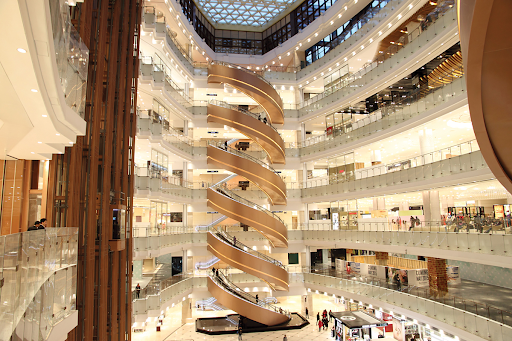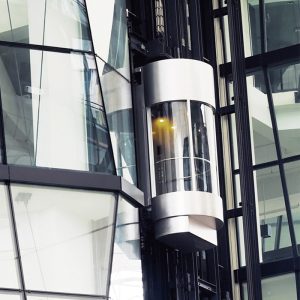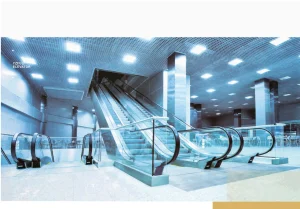As buildings continue to rise higher and urban areas grow denser, elevators and escalators have become essential components of modern architecture. However, these vertical transportation systems also consume a significant amount of energy, contributing to the overall environmental impact of buildings. With sustainability becoming a top priority for developers and property managers, the industry has responded with innovative eco-friendly elevator and escalator solutions that reduce energy consumption, cut emissions, and enhance efficiency. In this blog, we’ll explore the key sustainable technologies and practices shaping the future of vertical transportation.
1. Energy-Efficient Elevators
One of the most important advancements in eco-friendly elevator technology is the development of energy-efficient models. Traditional elevator systems consume a large amount of energy, especially in high-rise buildings where they operate frequently throughout the day. Newer models, however, are designed to minimize energy use through a variety of innovations:
Regenerative Drives: Regenerative drive technology is a game-changer in energy-efficient elevators. When an elevator descends with a full load or ascends with a lighter load, it generates excess energy. Instead of wasting this energy as heat, regenerative drives capture it and feed it back into the building’s electrical system, reducing overall energy consumption by up to 30%.
LED Lighting and Automatic Shut-Offs: Many modern elevators are equipped with energy-saving LED lighting and systems that automatically shut off lighting, ventilation, and other non-essential features when the elevator is not in use. These small measures can add up to significant energy savings over time.
Smart Destination Control Systems: Intelligent destination control systems reduce energy consumption by grouping passengers with similar destinations into the same elevator. This minimizes the number of stops and reduces the overall travel time, resulting in more efficient operation and lower energy use.
2. Eco-Friendly Escalators
Escalators, while essential in many public spaces like shopping malls, airports, and transit hubs, can also be energy-intensive. However, new technologies and designs have made escalators more environmentally friendly:
Variable Speed Drives: One of the most effective ways to reduce the energy consumption of escalators is through variable speed drives. These systems can automatically adjust the speed of the escalator based on demand. For example, when no one is using the escalator, it can slow down or enter standby mode, significantly cutting energy use.
Standby Mode Sensors: Escalators equipped with motion sensors can detect when they are not in use and switch to a low-energy standby mode. As soon as a passenger approaches, the escalator resumes its normal speed. This simple yet effective solution can reduce energy consumption by up to 30% compared to escalators that run continuously.
Energy-Efficient Motors: Modern escalators are also designed with high-efficiency motors that consume less electricity while delivering the same level of performance. This reduces the environmental footprint of the escalator without compromising on functionality.
3. Sustainable Materials and Construction
In addition to energy-saving technologies, the sustainability of elevators and escalators can also be improved through the use of eco-friendly materials and construction practices. Many manufacturers now prioritize the use of recycled and recyclable materials in the construction of these systems, such as steel, glass, and aluminum. This reduces the environmental impact during production and makes it easier to recycle components at the end of the system’s lifecycle.
Furthermore, some companies are adopting more sustainable production processes, such as reducing water usage, minimizing waste, and sourcing materials from environmentally responsible suppliers. These practices help to reduce the carbon footprint of vertical transportation systems even before they are installed in a building.
4. Smart Technology for Predictive Maintenance
Another critical component of sustainability in vertical transportation is maintenance. Well-maintained elevators and escalators operate more efficiently, use less energy, and have a longer lifespan, reducing the need for replacements. Smart, connected technology is revolutionizing the way maintenance is performed, making it more proactive and efficient:
IoT-Enabled Monitoring Systems: The Internet of Things (IoT) allows elevators and escalators to be equipped with sensors that monitor performance in real-time. This data can predict when a component is likely to fail, allowing for timely maintenance before a breakdown occurs. This not only reduces energy waste from poorly functioning systems but also extends the lifespan of equipment, reducing the environmental impact associated with manufacturing new parts.
5. Green Building Certifications
For developers aiming to meet sustainability standards, eco-friendly elevators and escalators can contribute to green building certifications such as LEED (Leadership in Energy and Environmental Design) and BREEAM (Building Research Establishment Environmental Assessment Method). These certifications recognize buildings that meet high standards in energy efficiency, water use, and material sustainability. Installing energy-efficient vertical transportation systems can help a building earn points toward these certifications, which can, in turn, increase the property’s value and appeal to environmentally conscious tenants and investors.
Conclusion
Sustainability in vertical transportation is no longer just an option—it is an imperative. As buildings grow taller and more people rely on elevators and escalators daily, the demand for eco-friendly solutions will only increase. By choosing energy-efficient elevators with regenerative drives, variable-speed escalators, and smart maintenance technologies, developers and building owners can significantly reduce the environmental impact of their properties. Sustainable vertical transportation not only benefits the planet but also cuts operating costs, enhances building performance, and contributes to a greener future for urban living.




